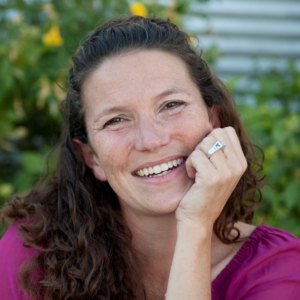For the Love of Lifelong Learning

Guest writer, and guest lecturer for the Learning Without Scars “Lectures for Learners” series, Bonnie Feigenbaum writes today about something that matters to all of us. We invite you to read Bonnie’s blog post, “For the Love of Lifelong Learning.”
In Québec there is a saying, Je vais me coucher moins niaiseux à soir. » which loosely translates to I’m going to bed wiser tonight. That is my goal every day when I awake to learn something new so I can lay my head down with more information in it, with a deeper understanding of some aspect of the world we live in. I believe there are three types of lifelong learning you can incorporate into your life, have-to, need-to and want- to.
- Have-to – Continuing education to maintain your professional status
When I finished my formal education in the 90’s, recertification requirements to maintain your professional designations (statuses) were few and far between and opportunities for learning for self-improvement were also limited. Now many professional orders and industries demand constant learning in order to be up to date on all the new technologies, practices and requirements. For example, in Quebec, Real Estate Agents are required to complete 24 continuing education credits every two years in a variety of topics related to their field in order to maintain their membership in the association.
In addition, in the last 30 years, education requirements to a decent job have boomed with most career driven employment requiring undergraduate degrees instead of just high school diploma, like in the securities industry, entry level positions where you need to have a bachelor’s degree to even be considered
Due to technological advances, remote learning has made education more accessible to the masses both in terms of finance and convenience, respecting time constraints and learning styles.
Technology also affects the types of jobs out there. Bank tellers are becoming obsolete, investment advisors and personal bankers replace them as their rote jobs are being downloaded to the consumer and these employees need to be trained to take on new roles. People are changing jobs more frequently now, so acquiring new skills to enhance your employability will also be a benefit. And you can look at these job changes in a different light as they are actually beneficial for lifelong learning. When you stay in the same organization, you gradually lose touch with the larger world outside your company’s silo. One of the biggest dangers of staying a at a job too long is that you fall behind what is happening in your industry and the wide world beyond it.
As many of my colleagues have written in these pages, I would encourage you to take advantage of any opportunities that your company affords you to further your education, develop the skills you need to maintain your status in advance to the next level.
- Learning because you need-to
The advances in technology also dictates lifelong learning here as we transitioned from landlines to cell phones to smartphones, we had to learn how to use these new communication tools. The same can be said of the transition to the online work environment and the current undeniable necessity of computer skills.
In addition, the rise of social media has led to a new participatory culture which means everyone can create and critique content in a real-time, unfiltered and direct way. This social media landscape is rather new and versatile and requires the accumulation of new media literacy skills in particular, the ability to evaluate reliability and credibility of the information and sources. you need to be able to ask the right questions to be able to determine what is “fake news”.
Lastly, Consumer Behaviour theories have shown us that consumers’ prior product knowledge predicts their information search, illustrated by an inverted-U relationship between knowledge and external search effort. In other words, people with minimal expertise may not feel sufficiently competent to search extensively. Novice consumers tend to process information in terms of the big picture instead of detailed information. They are overwhelmed by the knowledge they need to acquire and don’t know where to start. On the other hand, experts feel they have a better sense of what information is relevant, sometimes falsely; thus, they engage in a minimal to selective search. So, who searches the most? Moderately knowledgeable consumers. This means you need to develop a balanced base of knowledge in any subject so you can research and ask the right questions.
In today’s data-driven business landscape, staying up to date of the news and current events is an admirable way to learn about the new advances and challenges in our society, but how are they being presented, how can we navigate them, how can we succeed in this everchanging business landscape – committing to lifelong learning.
- Want-to Edu-taintment or Fun-ducation
Continuing education to maintain your professional status and to be able to function in to say society is required learning. But what about wanting to learn? Remember the joy and excitement you felt the first day of school? Do you still feel that spark? Well, that brings me to the next form of lifelong learning, you can have those experiences again with Edu-taintment or Fun-ducation mindset. These refer to embracing the topics that you want to explore and are motivated to master.
Studies with young adults have shown that learning processes are typically associated with an enhanced and broadened brain activity. Neuroscientists from Bochum University observed, learning processes in old people result in a further enhancement of brain activity too and that older people improve even more than younger people. This does not mean that training and learning can lead to a “rejuvenation” of the brain, nor does it reverse age-related brain changes, but rather remodels them. This study demonstrated that training and learning pay off at every age, in order to remain fit.
How would you get started? What do you care about? What did you want to be when you were a child?? There are classes available in a plethora of topics from ballet to baking, a multitude of language learning apps, how to videos for creative arts, electronics, web design and even construction.
Teachers can open the door to knowledge; but as I always tell my university students in this environment, you need to adult. You enter and decide to stay in the room by yourself. I believe that you can learn anything you want on your own time, I encourage to go to bed wiser every night.
Did you enjoy this blog? Read more great blog posts here.
For our course lists, please click here.





